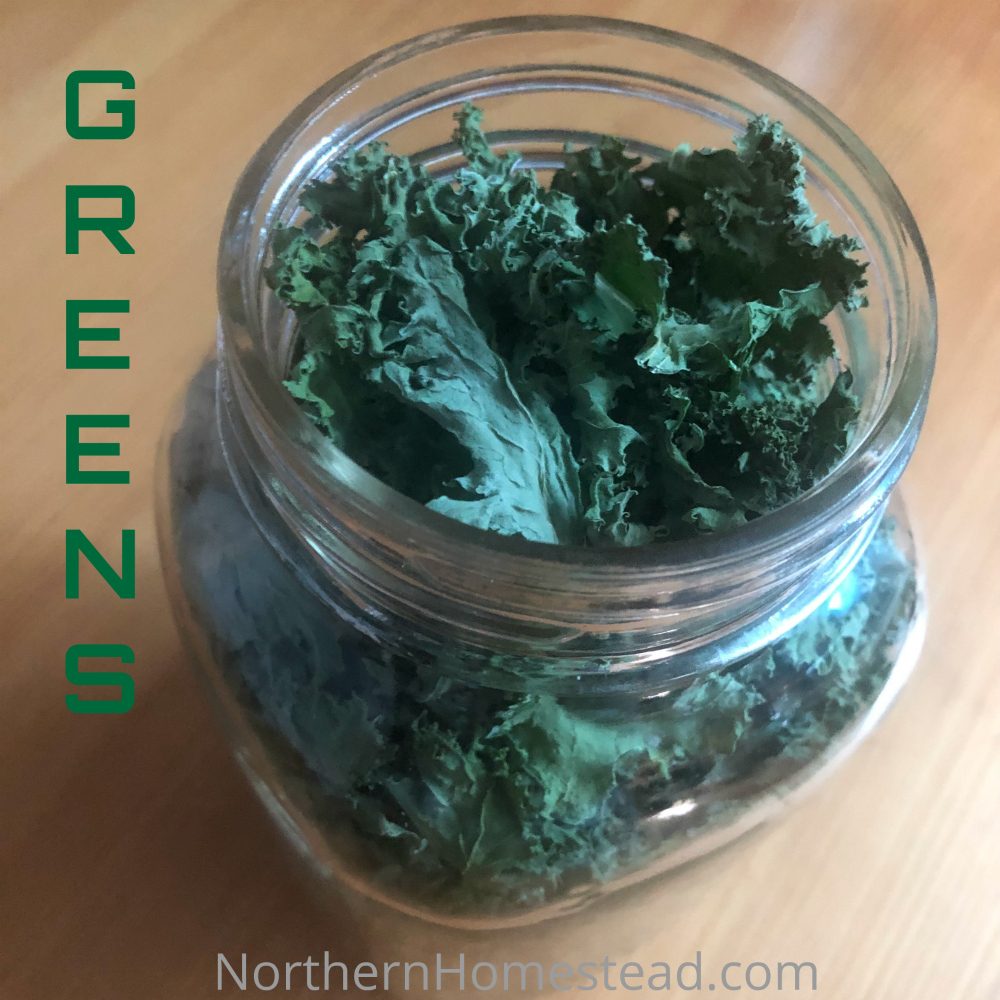
Growing your greens is great, eating them is better. Seriously, to grow greens is very simple, as of right now, in mid-August, our whole garden is green. Most of the greens growing are edible, including some common weeds. Do we eat them all?
No.
With the abundance also comes pickiness. We have our favorite greens like spinach, kale, arugula, lettuce, sorrel, swiss chard, and beet leaves. Sometimes we grow more than we can handle these favorites. Those are the times that we like to preserve them for use at a later time.
We already covered how to freeze greens in two ways. Today’s post is about dehydrating greens.
Why dehydrate greens
Dehydrating greens is probably the simplest method to preserve greens. Still, we only do it when there are enough greens of one variety to fill the dehydrator. Most greens we freeze bag by bag at the time as they grow.
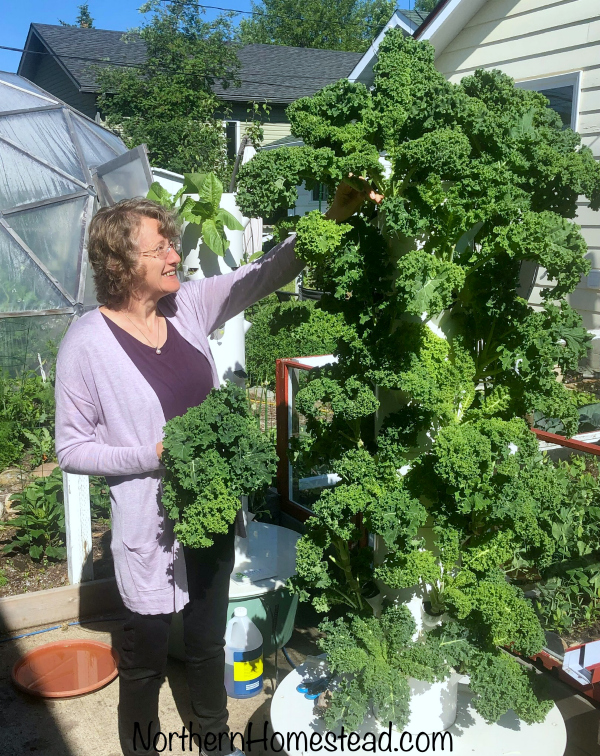
In early summer we like to grow a whole Tower Garden with kale. Kale grows so well here. When there is too much kale to handle, dehydrating it is a great way.
Not just kale can be dehydrated, other greens can be preserved so too. You can also mix and match as long as the leaves have about the same thickness and would dry at the same time.
Dehydrate greens is an easy way to store up enough greens for the long winter to use in green smoothies, soups, and other dishes.
One day I shared my Tower Garden picture with kale on social media, and someone shared it with the headline: Kale! This is like $100 in kale over at FreshCo. $200 at Metro.
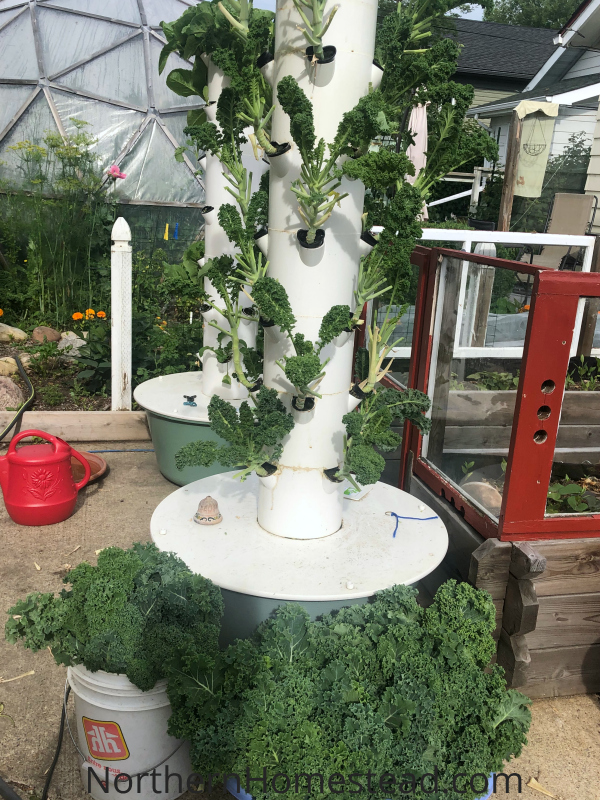
Now I do not know what kale costs at those places, no need for me to find out. We grow our own and preserve for the winter. But I am sure dehydrating your greens saves a lot of money.
How to dehydrate greens
Dehydrating greens is simple. Wash the leaves thoroughly and drain as much as possible. A salad spinner is a great tool for that.
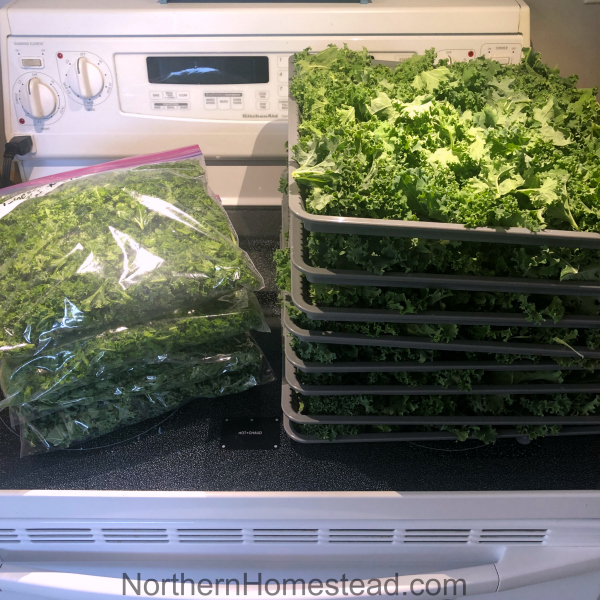
When dehydrating kale, take out the stem and rip the leaves into smaller pieces. Whenever the rib is thicker than the leave, take it out. Baby kale or spinach leaves can be left whole.
Now spread the leaves evenly on a dryer sheet. As you see in the picture we made a quite thick layer since we had so much to process. With curly kale, this worked fine, since there was still air in between the leaves.
Set your time and temperature according to your dryer. We use Cabela’s 10-Tray Deluxe Dehydrator.

Storing dehydrated greens
We store dehydrated greens, herbs as well, in tight glass jars. One jar can hold a lot of dry greens.
Dry greens can also be made into green powder by blending them a few minutes in a blender. You can even make capsules out of homegrown dehydrated greens to take with you on road trips.
Personally we just store them in jars.
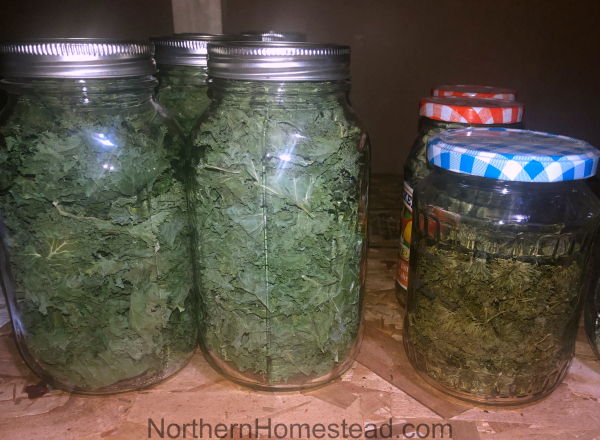
Using dehydrated greens
Just like frozen greens, dehydrated greens can be used in smoothies and soups. Or crush some in your hand and sprinkle on dishes. Looks pretty and adds nutrition.
Or crush some in a blender, not to powder, just to flocks. I do this with dry herbs, it is very convenient to use.
Even if you or someone in your family is not a fan of greens, this way they can have lots without even noticing.
We would love to hear your ideas on where to use dehydrated greens.
We invite you to subscribe to Northern Homestead and follow us on Instagram, Facebook or Pinterest for more great recipes.

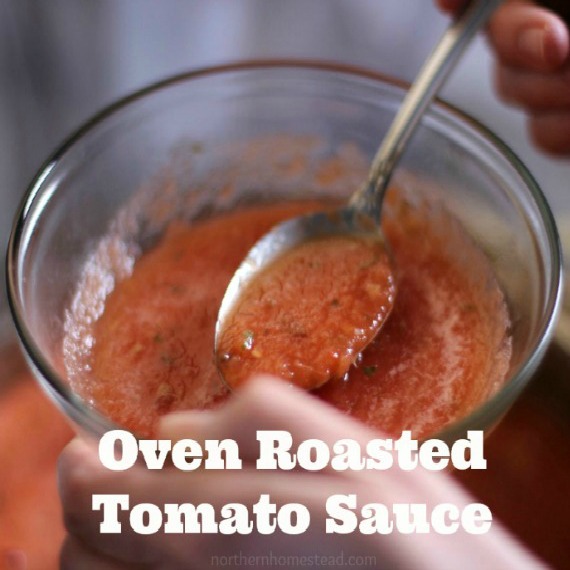
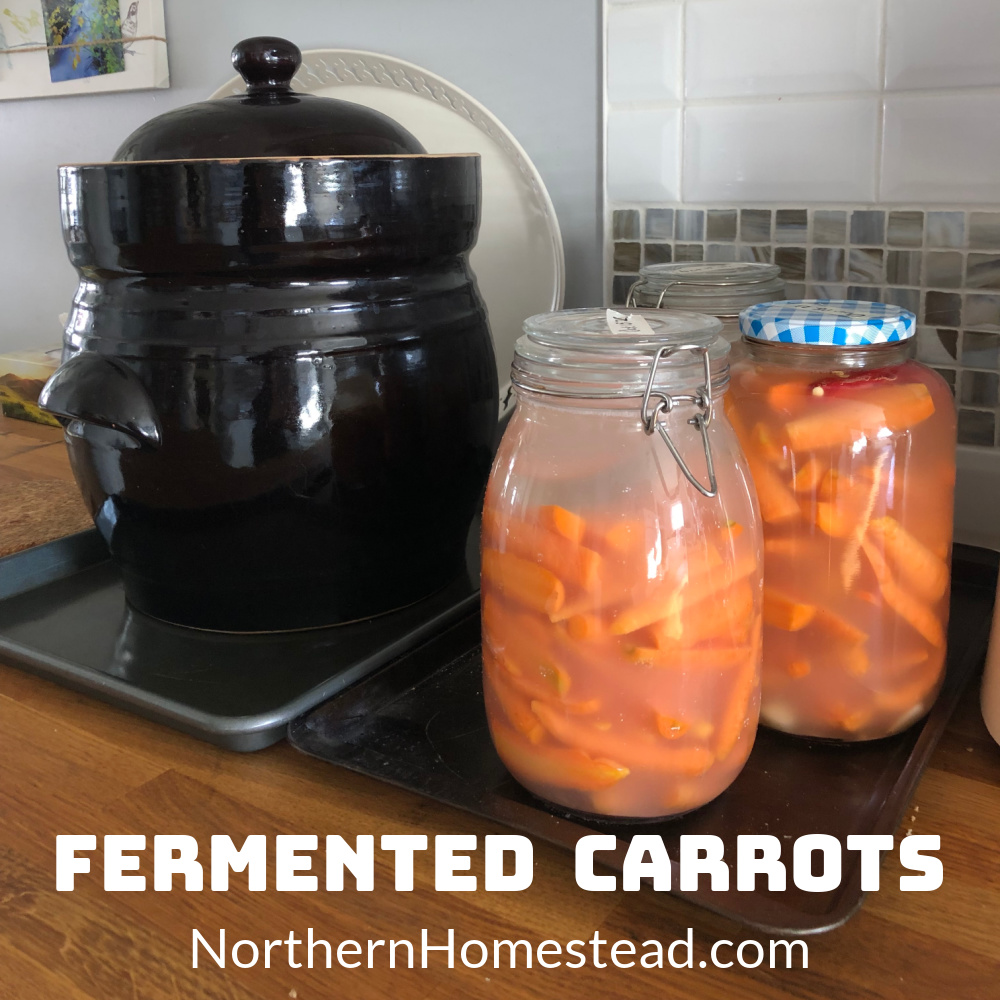
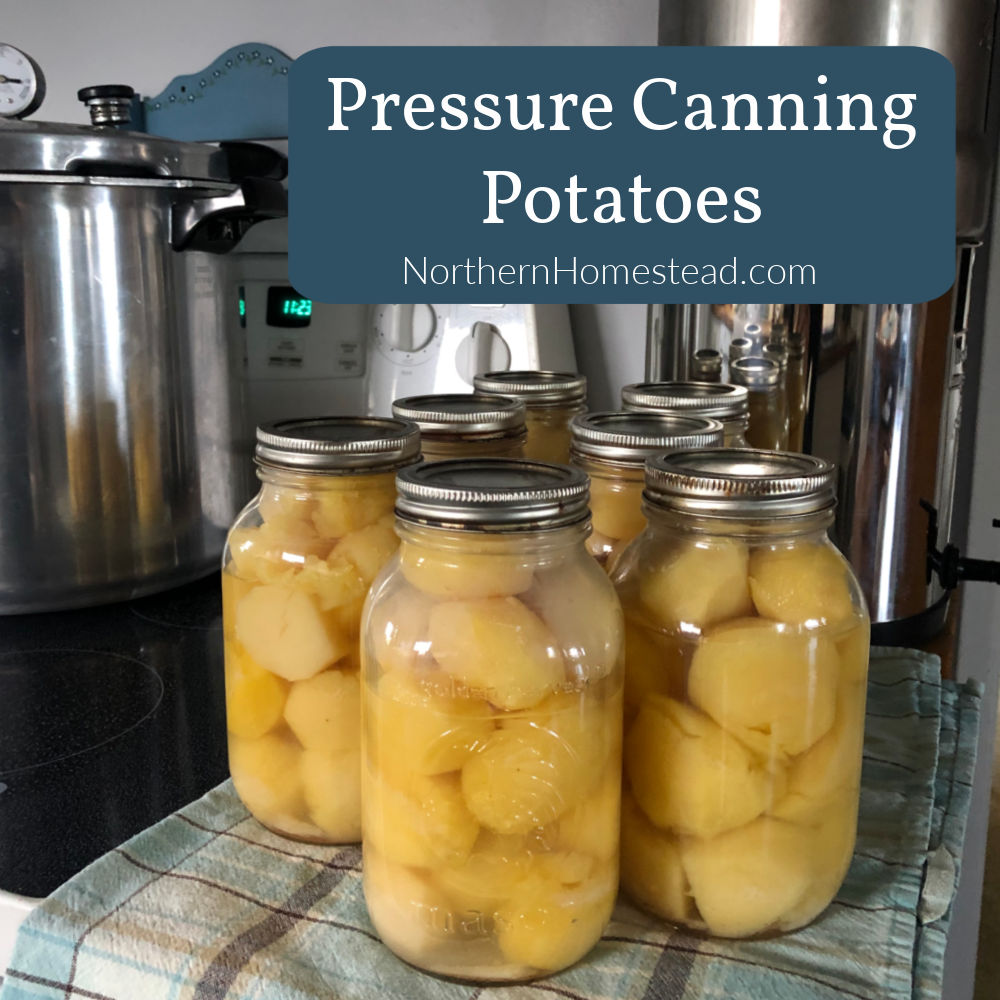
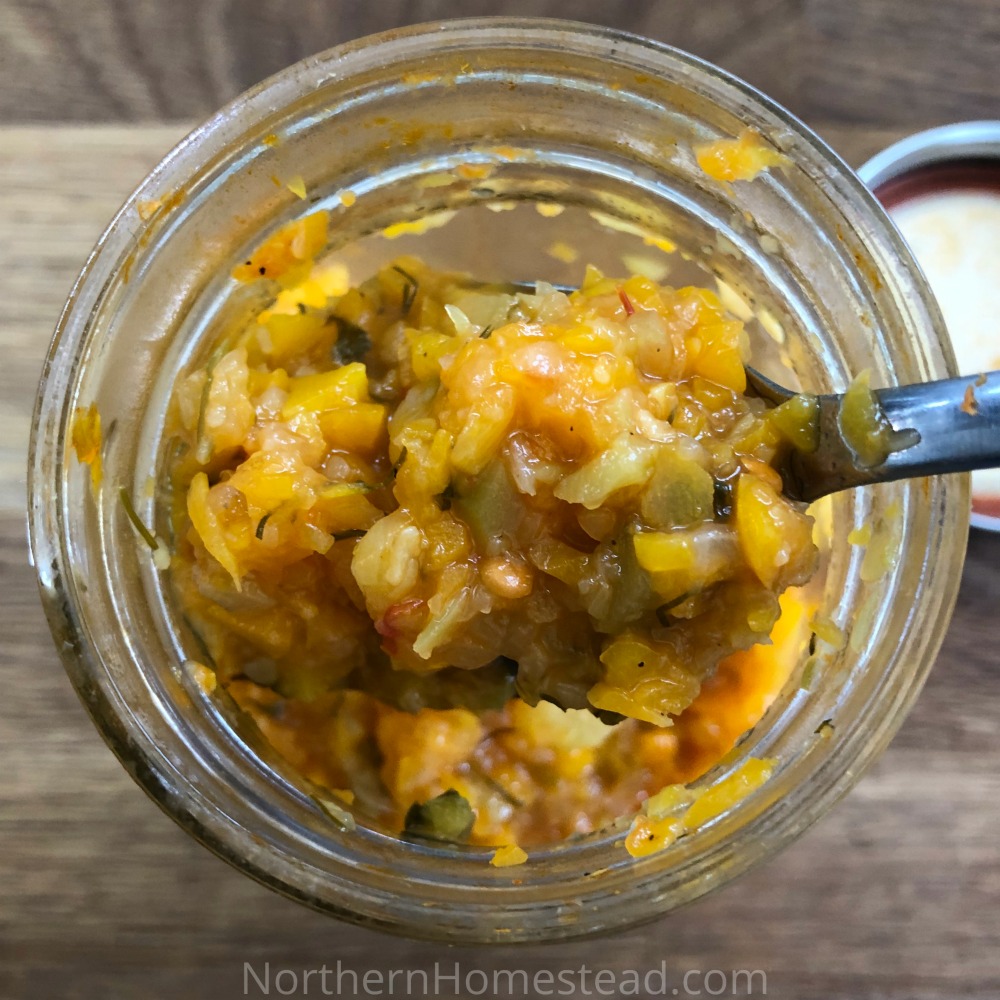
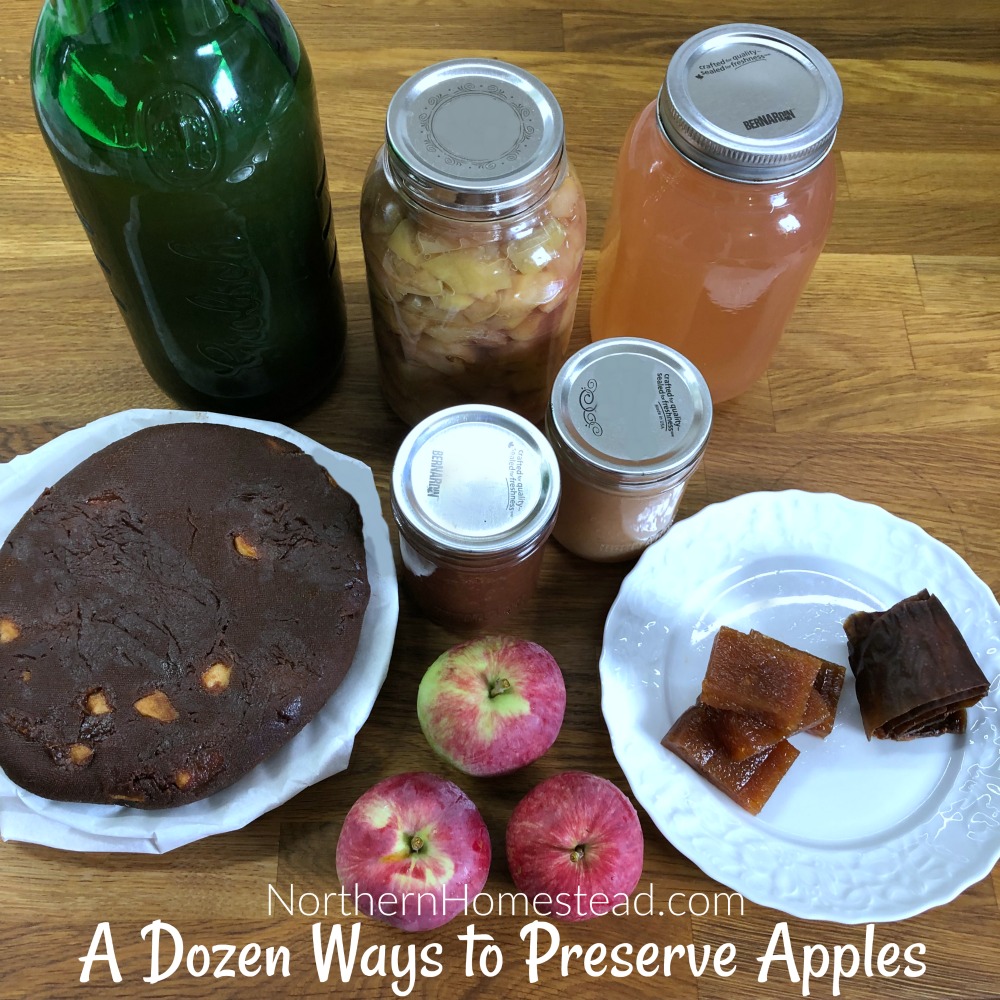
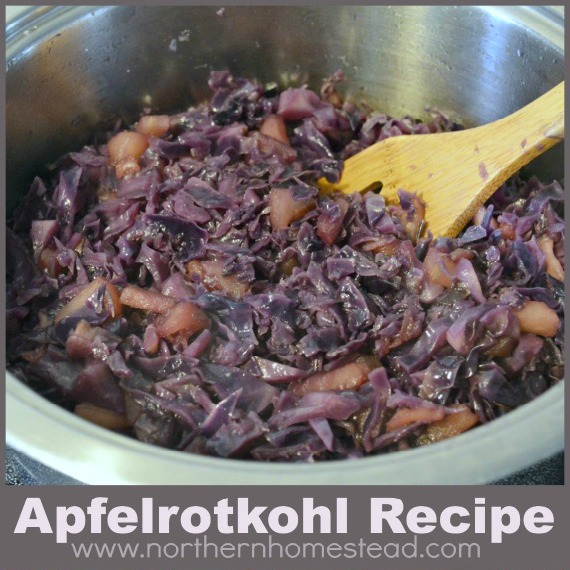

If I dehydrate and store in a glass jar, how long will it last(approximately)
I do have dried herbs that are a few years old, still the same. But I would not be able to say for sure how long.
Thanks for posting about dehydrating greens. I had no idea you could do this with greens. I love them in soups and salads, so this is great.
You are welcome. To have homegrown greens ready to use is always great.
I sincerely love reading and looking forward to your blogs! Thank you so much for taking the time! Im just slightly south of you across the border in Northern Idaho. You gave me an answer today on what to do with all my chard.. .Im going to go to Cabelas and get the dehydrator.
Best Wishes
Thank you for your kind words. The dehydrator is great for so many things. One of my favourites are dried sour cherries.
Thank you for all the tips and great info, I’ve been following or subscribing your blog for quite some time now, I find it very helpful and gives me knowledge and healthy ideas. Again, thank you and keep it up! 👍👌👏
Ps: Also since you featured your tower garden, It encourage me to own one, now I’ve become a believer and became a distributor 🙂 thank you for the inspiration! More blessings to you!
Thank you Riena for your kind words, hope you like your Tower garden as much as we do.
I am dehydrating my first set of kale. Thank you for posting and teaching us how to do it. I had no idea that kale could be dehydrated.
Thank you
I don’t have a dehydrator but have heard you can dehydrate stuff in the oven on a low temp. Anyone have experience doing this with greens? Want to store some for the winter using this method in addition to the frozen leaves and blanched/frozen in ice cube trays that I’ve already done. Thank you!
We make kale chips in the oven, so essentially it would be the same. Turn your oven on the lowest setting and dehydrate till dry.
You can dry them in the sun. You can hang them in small bunches of ‘branches ‘ of the herbs ( or like all the stems tied together) on a clothesline and hang them in a shady dry shed with windows and ventilation and they’ll dry beautifully. I’ve done this with bunches of herbs too, and even left them in the shed and used them right off the ‘clothesline’ in the shed all winter. ( The lazy way of dealing with a lot of excess after already carefully drying and preserving).
You could also pickle big leaves of Chard, Kale, Beets etc and use them just as you would to make Greek Dolmades or cabbage rolls.
Hi there! I appreciate the information you graciously share. Thank you so much.
I have dehydrated chard and stored in airtight container but a number of edges are losing the green and looking more brown. Everything seems to be fine except colour. Is that still ok?
So hard to tell from distance. It could have been that the ages have just dried too much, roasted, so they would turn brown. In that case they would be okay. If they smell good, and are not moist or slimy, I would use them. If in doubt just remove the brown ages and use the rest.
Do the leaves last longer when they are plain as opposed to seasoned as in kale chips? I have a lot of greens from chard, broccoli, and kale. I want to preserve them and have them last for a year or more. Thanks in advance.
Kale chips are great, but when stored they do lose their crispiness. So there really is no point in seasoning the greens before dehydrating.
I dry greens a lot: spinach, beet leaves, kale, chard, dandelion leaves etc. If you store them in glass containers they need to be kept dark to avoid losing color. We use them in large pieces to throw in the pot when cooking rice, in stir fries, in soups, and rehydrated to use in casseroles, lasagna, etc.
If properly dried and sealed for storage they’re good for a very very long time.
Thank you for the tip to keep them in a dark place and for using dehydrated greens. Appreciate it.
A single bunch of kale here at the grocer is $7 CAD
Just more reasons to grow and preserve your own. By the way, dehydrated kale flakes are so good in hummus. Yum!